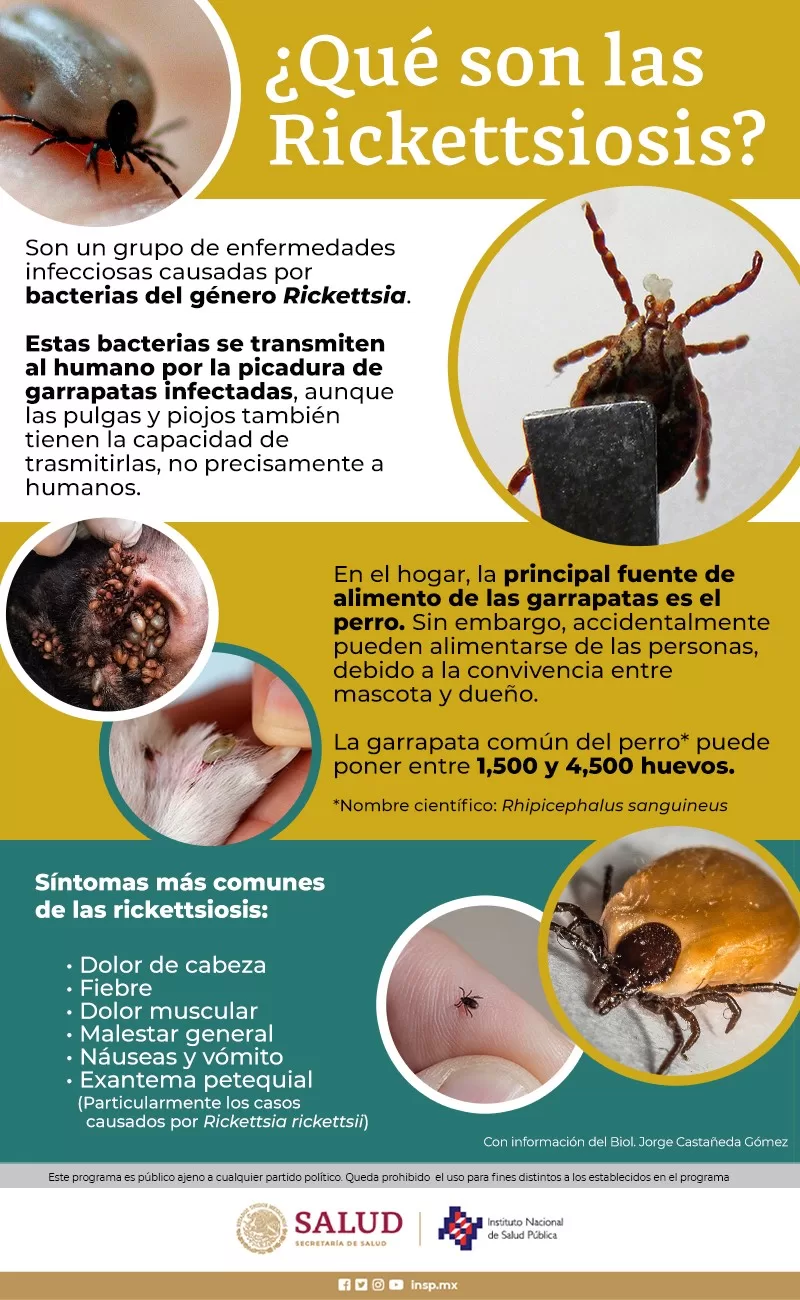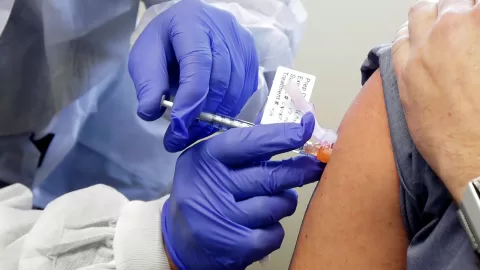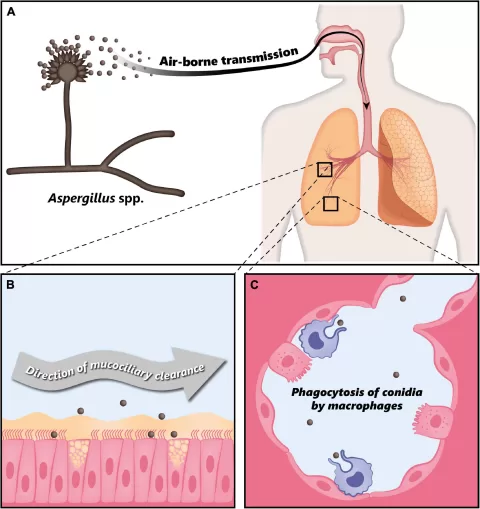Rickettsiosis in Cambodia is an emerging public health concern, particularly due to the complex epidemiology surrounding rickettsial infections that have surfaced over the past decade. Between 2007 and 2020, the region has witnessed a significant burden of these diseases, often presenting as acute undifferentiated febrile illness, which complicates timely diagnosis and treatment. The studies reveal that urban living, age, and recent forest visits are critical risk factors for rickettsiosis, contributing to the alarming rates of infection. With symptoms ranging from rashes to severe vomiting, rickettsial infections have become increasingly difficult to detect and manage within the Cambodian healthcare system. Addressing this growing disease burden necessitates improved diagnostic tools and greater awareness among healthcare providers about rickettsiosis epidemiology and its associated clinical manifestations.
Rickettsial diseases, which encompass a range of infections caused by the Rickettsia and Orientia bacteria, pose significant challenges in Cambodia’s healthcare landscape. As vector-borne infections, these diseases are transmitted primarily through ticks, fleas, and lice, often leading to varied symptoms that resemble other febrile illnesses. The prevalence of rickettsiosis underscores a pressing need for enhanced understanding of its risk factors, particularly among populations residing in urban areas or those engaging in forestry activities. With an increased focus on the disease burden associated with these infections, public health initiatives must adapt to improve diagnosis and treatment options for individuals suffering from symptoms linked to rickettsial infections. Building awareness and educating healthcare professionals will be vital in combating this often underestimated aspect of Cambodia’s disease landscape.
Understanding Rickettsiosis and Its Clinical Manifestations in Cambodia
Rickettsiosis, a group of infections caused by the Rickettsia and Orientia genera, presents with a diverse range of clinical symptoms. In Cambodia, during the period of 2007-2020, patients primarily presented with acute undifferentiated febrile illness (AUFI). Symptoms such as headache, myalgia, and nausea often complicate the diagnosis, as they overlap with other infectious diseases prevalent in the region. Among the identified cases, a significant number displayed skin rashes, vomiting, and skin lesions that were directly associated with rickettsial infection, which underscores the importance of recognizing these symptoms for timely treatment and management of the illness.
The epidemiological data collected over the 13 years indicate that rickettsiosis is a significant contributor to the disease burden in Cambodia. Out of 10,243 participants tested, 802 were diagnosed with a rickettsial infection, reflecting a prevalence rate of 7.8%. The most common infections included typhus and spotted fever, revealing the geographical and ecological nuances that influence these infections. As rickettsial infections are treatable with antibiotics, raising awareness about their clinical manifestations is crucial to improving diagnostic practices and ensuring appropriate treatment for affected individuals.
Risk Factors Contributing to Rickettsiosis in Cambodia
A comprehensive understanding of the risk factors associated with rickettsiosis is essential for effective public health interventions. In Cambodia, the study revealed that increased age, urban living, and recent travel to forested areas significantly correlated with higher rates of rickettsial infections. These factors suggest that urbanization and environmental exposure play a critical role in the transmission dynamics of rickettsial diseases. The presence of vector populations, including ticks and fleas in urban and peri-urban settings, may also facilitate the spread of infections among different demographics.
In particular, individuals above the age of 15 were found to have a higher percentage of exposure to rickettsioses, indicating an age-related vulnerability. Additionally, behaviors associated with travel, especially to rural or forested areas, further exacerbate the risk of encountering vectors that transmit the disease. Recognizing these risk factors can aid public health officials in strategizing more effective prevention campaigns and developing targeted interventions to mitigate the impacts of rickettsioses in the Cambodian population.
As healthcare systems grapple with the challenges posed by acute undifferentiated febrile illness, incorporating rickettsiosis into the differential diagnosis becomes imperative. By addressing the specific risk factors that increase susceptibility to these infections, health professionals can enhance the quality of care and improve patient outcomes.
The Disease Burden of Rickettsiosis in Cambodia
The burden of rickettsiosis in Cambodia is significant, as this study has demonstrated through seroprevalence data and patient diagnosis rates. With an overall seroprevalence of 18.1%, rickettsial infections are prevalent yet often overlooked in the context of febrile illnesses. The findings highlight that rickettsiosis accounts for a meaningful portion of the disease burden, particularly when common diseases such as malaria and dengue are ruled out. The implications of this burden are far-reaching, affecting not just individual health outcomes but also straining healthcare resources.
The need for robust diagnostic capabilities and clinical guidelines is paramount in managing this underrecognized yet treatable infection. As rickettsial infections present with a range of nonspecific symptoms, enhancing the reliability of diagnostics and training healthcare providers to recognize signs of rickettsiosis can help in reducing the disease burden. Public health initiatives aimed at awareness and accessibility of treatment options must be prioritized to address the challenges posed by rickettsial infections effectively, ensuring that healthcare systems can respond adequately to this evolving health threat.
Epidemiology of Rickettsiosis in Cambodia: Trends and Insights
The epidemiology of rickettsiosis in Cambodia has shown dynamic trends over the years from 2007 to 2020. The study highlights different types of rickettsial infections, predominantly typhus and spotted fever, shedding light on how these diseases distribute among the population. Environmental changes, urbanization, and increased human-vector interactions can all contribute to shifts in epidemiological patterns. For instance, increased urbanization in regions may create favorable conditions for the proliferation of disease vectors, highlighting the need for continual epidemiological monitoring.
Furthermore, understanding the transmission dynamics of rickettsial infections in Cambodia requires a multi-faceted approach that includes ecological, sociocultural, and economic factors. Such insights can aid in predicting potential outbreaks and implementing preventive measures. Community education and public health campaigns targeting high-risk populations are essential for improving awareness and promoting behavioral changes that reduce exposure to the disease. By analyzing epidemiological data, health authorities can adapt strategies effectively to manage rickettsioses and better alleviate the burden they place on the Cambodian healthcare system.
Clinical Implications and Management of Rickettsiosis
Effective management and treatment of rickettsiosis require understanding its clinical implications within the broader context of febrile illnesses. As many rickettsial infections manifest with overlapping symptoms common to other diseases, accurate and timely diagnosis becomes critical. Misdiagnosis can lead to inappropriate treatments and increased morbidity; hence, healthcare providers need to consider rickettsial infections when treating patients presenting with AUFI. Moreover, the association of specific symptoms, such as skin rashes and vomiting, can serve as important diagnostic indicators for clinicians in resource-limited settings.
To improve the management of rickettsial infections in Cambodia, there is a pressing need for enhancing diagnostic infrastructure and clinical training for health care practitioners. Implementing standard protocols for rickettsiosis, including accessible serological testing, can help healthcare workers differentiate between rickettsial infections and other febrile illnesses. Ultimately, a well-informed clinical approach will reduce the burden of disease by ensuring that patients receive appropriate treatment in a timely manner, improving patient outcomes significantly.
Rickettsiosis: Preventive Strategies and Public Health Measures
Preventive strategies play a crucial role in mitigating the impact of rickettsiosis in Cambodia. Given its vectorborne nature, the first line of defense against rickettsial infections includes controlling vector populations, such as fleas and ticks. Public health initiatives could focus on educating communities on measures to minimize exposure to these vectors, particularly for individuals traveling to rural or forested areas. Simple interventions such as using insect repellents, wearing protective clothing, and improving sanitation can drastically reduce the risk of transmission.
In addition to individual preventive measures, community-level actions are essential for creating a barrier against rickettsial infections. Engaging local health agencies and stakeholders in awareness campaigns can enhance knowledge about rickettsiosis and its transmission dynamics. Furthermore, implementing environmental management practices, such as reducing potential vector breeding sites, may contribute to lower incidence rates of rickettsiosis. Comprehensive public health strategies will not only raise awareness but also empower communities to take proactive measures against vectorborne diseases.
Future Research Directions for Rickettsiosis in Cambodia
Research is vital for expanding the understanding of rickettsiosis in Cambodia, particularly considering the emerging trends in rickettsial infections. Future studies should focus on establishing a comprehensive understanding of rickettsial epidemiology, including geographic distribution, seasonal trends, and potential reservoirs for these pathogens. By leveraging modern molecular techniques, researchers can track transmission pathways and identify risk factors that may not have been previously recognized.
Moreover, investigating the long-term effects of rickettsial infections on health outcomes can provide significant insights into the burden of these diseases. Understanding how factors like climate change, land-use patterns, and urbanization influence vector ecology and infection dynamics will be critical for developing targeted public health responses. Collaborations between researchers, healthcare professionals, and public health officials will foster a holistic approach to addressing rickettsiosis in Cambodia, ultimately paving the way for innovative interventions that can reduce the prevalence of these infections.
The Importance of Awareness and Education on Rickettsiosis
Raising awareness and educating the public about rickettsiosis is a fundamental component of combating this disease in Cambodia. Many individuals with rickettsial infections remain undiagnosed, largely due to the lack of knowledge about the disease among both healthcare providers and the general population. Campaigns focused on educating caregivers, healthcare professionals, and communities about the symptoms and risks associated with rickettsioses can empower them to seek medical attention promptly, thus improving health outcomes.
Further, utilizing various platforms for disseminating information about rickettsiosis, such as community workshops, social media campaigns, and collaboration with local NGOs can enhance visibility and understanding of this infection. Equipping healthcare providers with the latest knowledge and resources regarding rickettsiosis alongside empowering individuals and communities to recognize its early signs can play a pivotal role in effectively reducing the burden of these diseases in the long term.
Frequently Asked Questions
What is rickettsiosis and its relevance to Cambodia’s disease burden?
Rickettsiosis refers to a group of diseases caused by rickettsial infections, which are transmitted via arthropod vectors like ticks and fleas. In Cambodia, rickettsiosis contributes significantly to the overall disease burden, with a notable prevalence among individuals presenting acute undifferentiated febrile illness (AUFI). Analytical studies from 2007 to 2020 have shown a seroprevalence of 18.1%, indicating a considerable public health concern.
What are the common symptoms of rickettsiosis observed in Cambodia?
In Cambodia, common symptoms associated with rickettsiosis include fever, headache, myalgia, vomiting, and skin rashes. These symptoms are often similar to other febrile illnesses, which can lead to misdiagnosis. The identification of rickettsial infections is crucial for appropriate treatment and management.
What are the identified risk factors for rickettsiosis in Cambodia?
Risk factors for rickettsiosis in Cambodia include increased age, urban residency, and recent travel to forested areas. These factors significantly correlate with the likelihood of contracting rickettsial infections, emphasizing the need for targeted public health interventions in these groups.
How does rickettsiosis epidemiology impact public health in Cambodia?
The epidemiology of rickettsiosis in Cambodia reveals a long-standing burden of infection, particularly among those suffering from AUFI. Understanding the epidemiology aids in developing effective diagnostics and treatment protocols, which are essential for reducing the incidence of these infections and improving health outcomes.
Are rickettsial infections in Cambodia easily treatable, and what are the challenges?
Rickettsial infections in Cambodia are generally treatable with antibiotics; however, challenges arise due to underdiagnosis and limited access to healthcare services. Many cases of rickettsiosis may go unrecognized, especially in resource-limited settings, highlighting the need for improved diagnostic capabilities.
What public health strategies can be effective in managing rickettsiosis in Cambodia?
Effective public health strategies for managing rickettsiosis in Cambodia should focus on enhancing diagnostic capacities, raising awareness of the disease symptoms among healthcare providers, and implementing educational initiatives in communities about prevention methods related to vector control.
| Key Points | Details |
|---|---|
| Study Period | 2007–2020 in Cambodia |
| Participants | 10,243 patients with acute undifferentiated febrile illness (AUFI) |
| Rickettsial Infections | 802 cases identified (7.8% prevalence) |
| Types of Rickettsioses | 557 typhus, 154 spotted fever, 136 scrub typhus |
| Overall Seroprevalence | 18.1% (1,857 out of 10,243) |
| Risk Factors | Increased age, urban residency, forest travel |
| Clinical Symptoms | Rash, vomiting, skin lesions |
Summary
Rickettsiosis in Cambodia represents a significant public health concern as evidenced by a prevalence study conducted from 2007 to 2020. The findings highlight that 802 out of 10,243 individuals tested positive for rickettsial infections, with a notable seroprevalence of 18.1%. Risk factors such as urban living and exposure to forest environments were linked to increased infection rates. Manifestations included common symptoms like skin rashes and vomiting. The study underscores the need for improved diagnostic tools and treatment strategies to better manage this often-underdiagnosed disease within Cambodia’s healthcare system.
The content provided on this blog (e.g., symptom descriptions, health tips, or general advice) is for informational purposes only and is not a substitute for professional medical advice, diagnosis, or treatment. Always seek the guidance of your physician or other qualified healthcare provider with any questions you may have regarding a medical condition. Never disregard professional medical advice or delay seeking it because of something you have read on this website. If you believe you may have a medical emergency, call your doctor or emergency services immediately. Reliance on any information provided by this blog is solely at your own risk.








